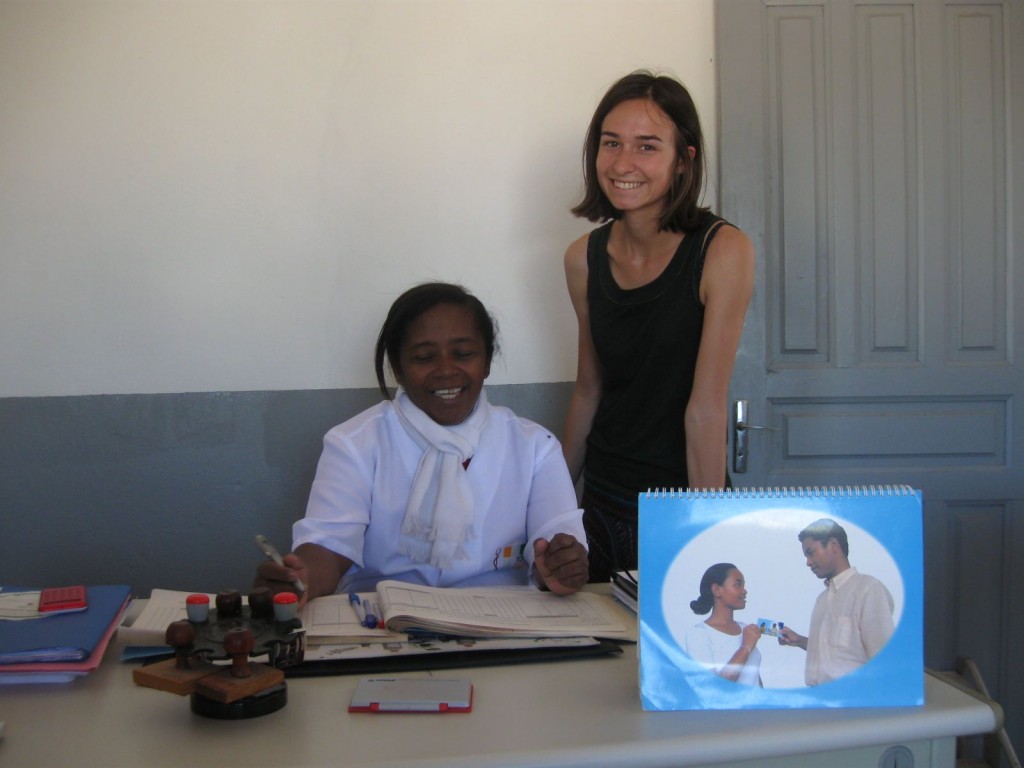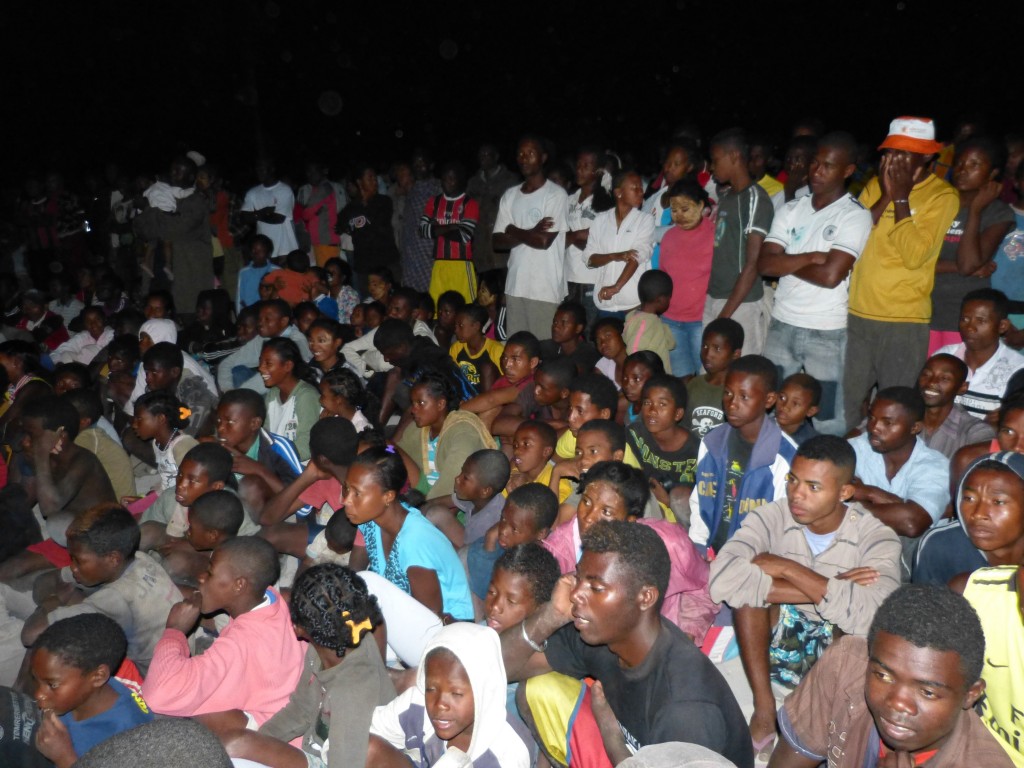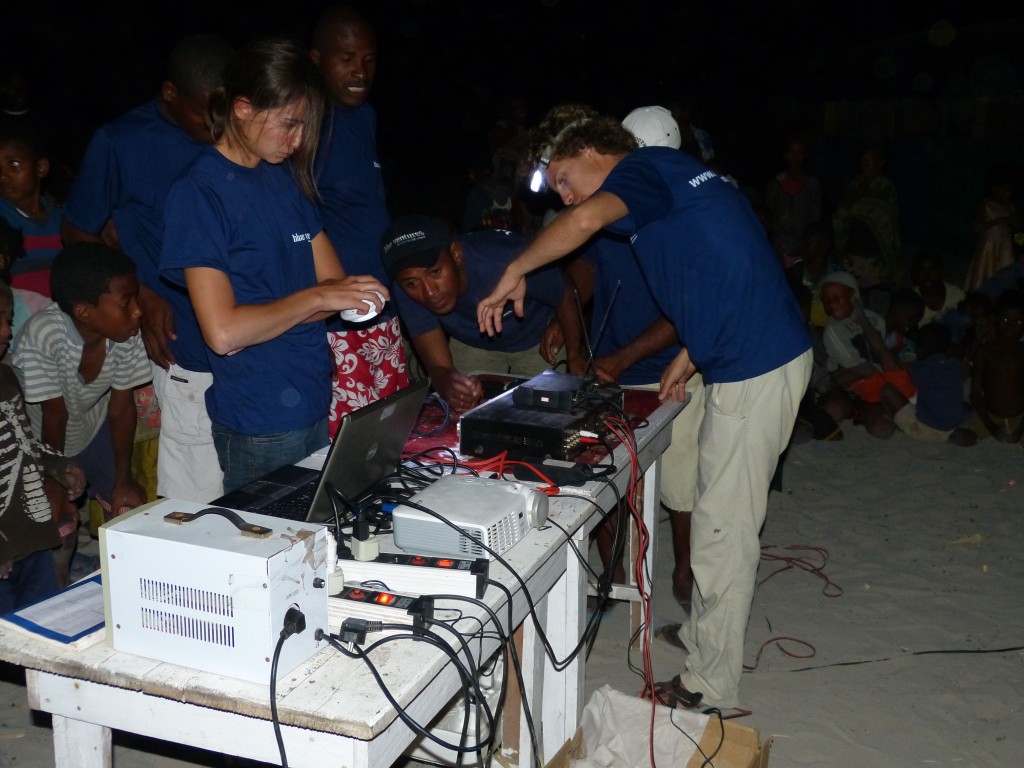By Vik Mohan, Medical Director
Last month I visited Belo sur Mer to witness the excellent progress that Lison Garrel has already made in implementing our new Safidy community health programme in the area, integrating it into our existing community-based mangrove conservation activities. Lison has secured full approval from the local health authorities, established strong relationships with various health partners in the region, and developed a clear plan for improving provision of family planning services to our partner communities. She has worked really hard to develop a good understanding of the different villages we work with, and has recruited and helped to train eight community-based distributors (CBDs) from the least served villages in the region, home to some 5,000 people. These local women are now able to provide basic counselling and a range of contraceptive options within their communities.

Lison with the director of the local health centre
While in Belo, I was fortunate to be able to attend an educational event, run along similar lines to the evening presentations given as part of the Velondriake village outreach tours, and similarly well attended. At least 300 people (adults and children) came, all enthralled by the educational videos that were played and fully engaged in the interactive presentations given by our staff. Participants were clearly learning something about health and conservation, as evidenced by the answers that they give to the quiz at the end of the evening. It was also great to see how Lison has already identified a few local “champions” who can help in ensuring community support for Safidy and promoting the adoption of healthier practicies, which will be crucial for the success and sustainability of the programme.

Great attendance at the evening presentation in Belo sur Mer – introducing the Safidy programme to the community
My impression is that Lison’s arrival, and the introduction of Safidy, has benefited Blue Ventures’ team in Belo sur Mer and the communities we partner with, by adding a new dimension to our work, broadening our approach from conservation to Population-Health-Environment, and giving us a new set of opportunities through which to engage with the local population. For Safidy, the benefits of integration into an existing community-based conservation initiative are also clear. Lison has been able to take advantage of our existing resources and infrastructure, as well as our strong local presence and good community relationships, to enable rapid and low-cost introduction of health services. Furthermore, having spent a good amount of time with our Safidy team in Andavadoaka, Lison has been able to draw upon their six years of experience, and will now be able to implement our “best practice” PHE model very quickly in Belo sur Mer. When I think about the lessons we learned in the early years of Safidy, what we are now able to achieve in Belo sur Mer, with less effort and in less time, is truly inspiring and a powerful reminder of how much we have grown as an organisation.

The team in Belo sur Mer work together to set up the projector for the evening presentation – integrating environmental and health topics
I had never seen a forest fire before, and was not expecting my time in Belo sur Mer to be marred by witnessing parts of the Kirindy Mitea national park go up in flames. Tragically, for practically my entire time in Belo sur Mer, we looked on as the park’s dry forest and associated biodiversity burned. It was heartbreaking to think of those unique plant and animal species literally going up in smoke. Although the source of the fire has not been confirmed, it is likely to have resulted from fires set near the park’s boundaries; a traditional practice by cattle farmers to clear old growth, which can be devastating when not properly controlled.
To me, this was yet another reminder of the importance of engaging communities in biodiversity conservation, and addressing their various needs in a holistic way. Seeing the sky blackened by the smoke from a fire in one of the world’s most ecologically important forests, I could not be more convinced of the value of taking an integrated approach to community-based conservation and sustainable development.

